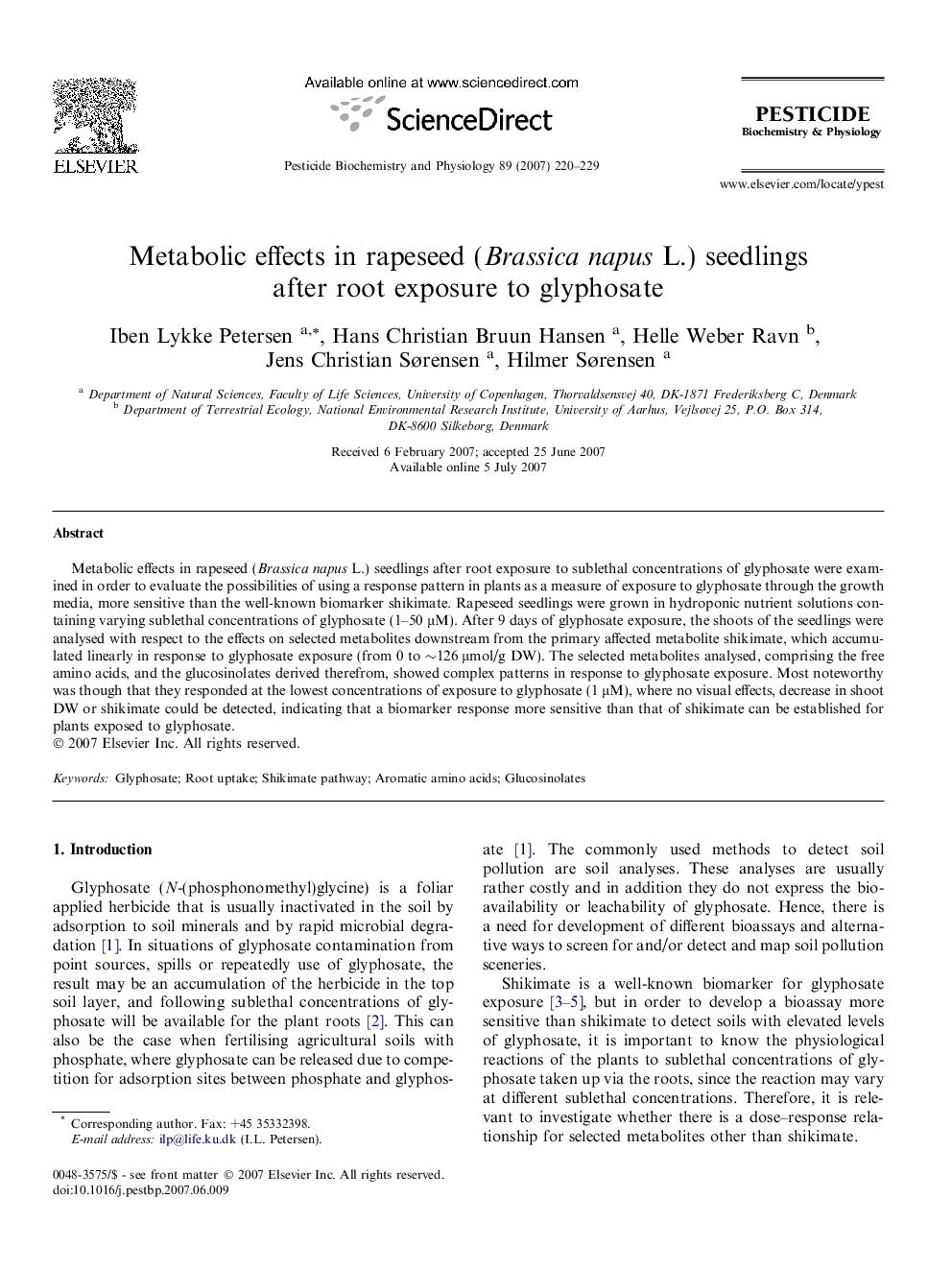| Article ID | Journal | Published Year | Pages | File Type |
|---|---|---|---|---|
| 2010155 | Pesticide Biochemistry and Physiology | 2007 | 10 Pages |
Metabolic effects in rapeseed (Brassica napus L.) seedlings after root exposure to sublethal concentrations of glyphosate were examined in order to evaluate the possibilities of using a response pattern in plants as a measure of exposure to glyphosate through the growth media, more sensitive than the well-known biomarker shikimate. Rapeseed seedlings were grown in hydroponic nutrient solutions containing varying sublethal concentrations of glyphosate (1–50 μM). After 9 days of glyphosate exposure, the shoots of the seedlings were analysed with respect to the effects on selected metabolites downstream from the primary affected metabolite shikimate, which accumulated linearly in response to glyphosate exposure (from 0 to ∼126 μmol/g DW). The selected metabolites analysed, comprising the free amino acids, and the glucosinolates derived therefrom, showed complex patterns in response to glyphosate exposure. Most noteworthy was though that they responded at the lowest concentrations of exposure to glyphosate (1 μM), where no visual effects, decrease in shoot DW or shikimate could be detected, indicating that a biomarker response more sensitive than that of shikimate can be established for plants exposed to glyphosate.
